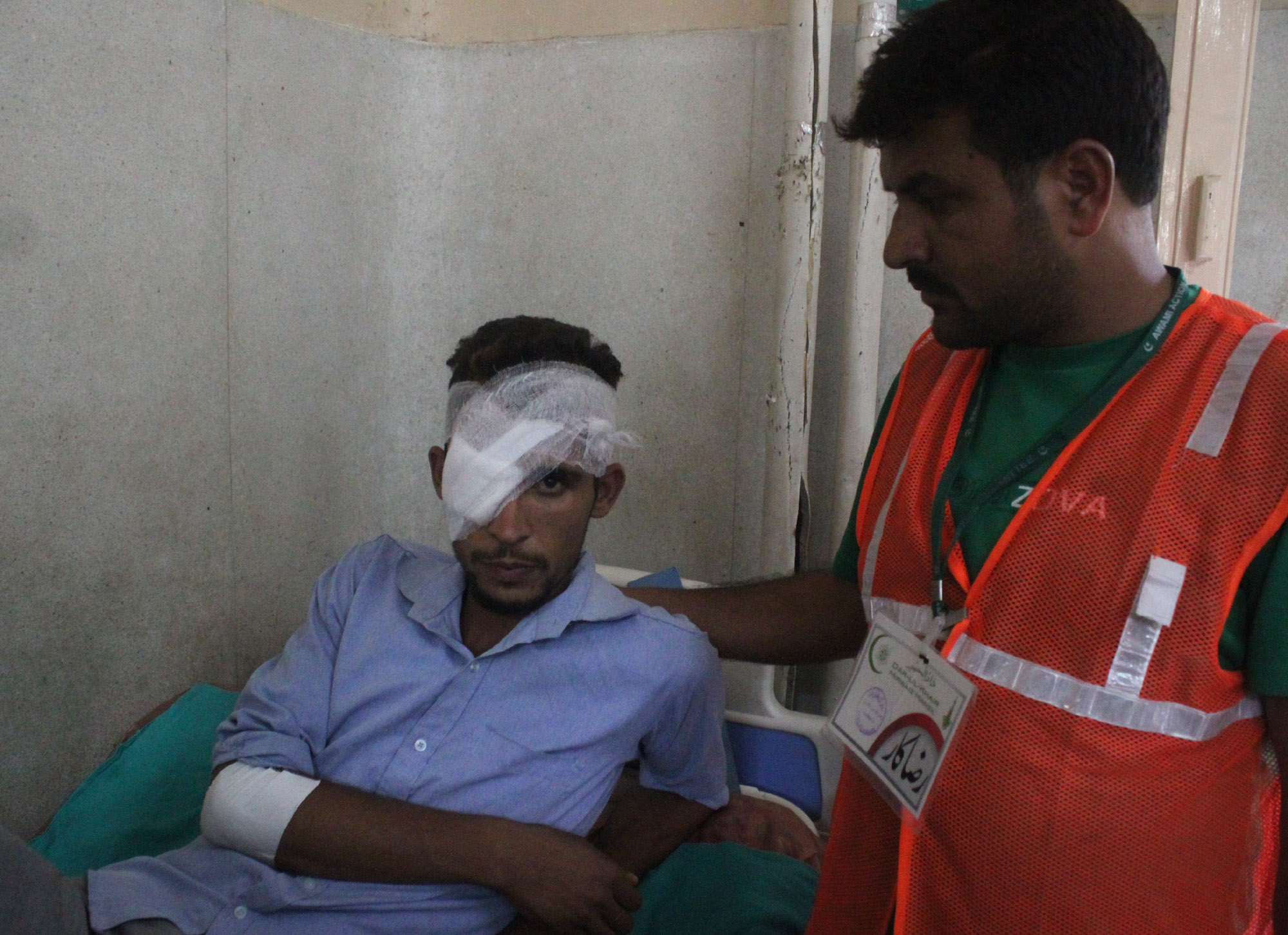Use of Pellet Guns and Human Rights Violations in Kashmir

NEW DELHI: The killing of the young militant activist Burhan Muzaffar Wani (21) on July 8 was clearly a disastrous mistake by the Indian security forces operating in Kashmir at this point in time. This led to the mass upsurge which started on July 9 which is still raging through the Kashmir Valley.
As of date (August 25), it is reported that around 51 percent of the 5800 civilians injured in the ongoing violence in the Valley were hit by pellet guns mainly in South Kashmir. A large number of the victims of pellet guns have been hit in their eyes causing permanent damage.
Home Minister Rajnath Singh’s hard line on Kashmir seems to have boomeranged. The security forces have felt encouraged to take the law into their hands. A major crisis of governance has erupted in the Valley.
The colossal harm done by the indiscriminate use of pellet guns by the security forces is well documented. Until July 24, they killed 50 civilians and a policeman and injured 3,700 civilians, 143 of them seriously. Some 1,739 security personnel were also injured.
One hospital alone recorded complete loss of vision for 60 people, including a 3-year-old girl and 4-year-old boy, due to pellet eye injuries.
While the former Director General of the Border Security Force EN Rammohan said the use of pellet guns was “reprehensible” and that it had not been used in conflict zones elsewhere in India, the DG of the Central Reserve Police Force said pellet guns is the ‘least lethal’ weapon available to his force in Kashmir.
Use of pellet guns causes extensive harm, arbitrary deaths and grievous wounds and it is not just callous, but criminal.
The indiscriminate use of “non-lethal” pellet guns by security forces to control stone-throwing pro-Wani protesters led to large number of civilian deaths in the Valley.
Pellet guns fire hundreds of tiny shots from each cartridge. But they do not offer effective aim to target the crowd. Hence, many peaceful Kashmiri protestors or bystanders were injured by pellets.
Ideally, women and children should be dealt with by female officers and only water cannons and tear gas be used to disperse them. The number of young victims, particularly boys, affected by crowd control tactics in Kashmir and the use of pellet guns on women and children indicate absence of precautions.
Section 197 of the Indian Criminal Procedure Code (CrPC) provides that no court has jurisdiction over an alleged criminal offence committed by a government official “while acting or purporting to act within the discharge of his official duty”, without prior approval of the government.
On July 9, the day Wani was killed, the Supreme Court of India observed that the rule of law applied “even when dealing with the enemy” while hearing a case related to fake encounters in Manipur.
The court held that an unending state of unrest could not “be a fig leaf for prolonged, permanent or indefinite deployment of the armed forces as it would mock at our democratic process.”
The police and other security forces in Kashmir have ignored the wholesome principles enunciated in the UN Basic Principles on the Use of Force and Firearms by Law Enforcement Officials and the UN Code of Conduct for Law Enforcement Officials.
The Basic Principles state that “Law enforcement officials must apply non-violent means before resorting to the use of force.”
Provision five of the Basic Principles states: “Whenever the lawful use of force and firearms is unavoidable, law enforcement officials shall: a) exercise restraint in such use and act in proportion to the seriousness of the offence; b) minimize damage and injury; c) ensure that assistance and medical aid are rendered to any injured or affected person at the earliest moment…”
Proportionality, necessity and calibration are the key principles in the use of force in national and international law.
Security forces involved in crowd control are expected to distinguish between violent protestors, peaceful protestors and bystanders.
The pellet gun cartridges in Kashmir fire a large number of small pellets over a wide range and they are not targeted. The inspector general of the Jammu and Kashmir police acknowledged that pellets do not have a predictable trajectory.
UN Basic Principles also require that, “in cases of death and serious injury or other grave consequences, a detailed report shall be sent promptly to competent authorities.”
Authorities should be reporting and investigating every instance of serious injury resulting from the use of pellet guns. However, instead of doing this, police personnel in Kashmir are attacking ambulances and searching hospitals to make arrests.
UN Code of Conduct for Law Enforcement Officials states that “law enforcement officials may use force only when strictly necessary.”
“In general, firearms should not be used except when a suspected offender offers armed resistance or otherwise jeopardizes the lives of others,” the code says.
Furthermore, “every law enforcement agency should be representative of and responsive and accountable to the community as a whole”.
However, the current state of conflict in Kashmir illustrates a clear divide along religious and cultural lines.
Since 2010, pellet guns have been used in Kashmir causing serious injury and severe harm to thousands of Kashmiris. Their use in Kashmir today to deal with protests is a clear violation of human rights and humanitarian law.
Such weapons have neither been used proportionally nor in compliance with international standards in crowd control.
Why have pellet guns been never used in the Northeast inhabited by ethnic minorities or in the Central Tribal Belt? Why only in Kashmir inhabited by Muslims?
(The writer is former Director General of Police in Northeast India)
(Cover Photograph Basit Zargar: One of the hundreds injured in their eyes by pellet guns in Srinagar)



